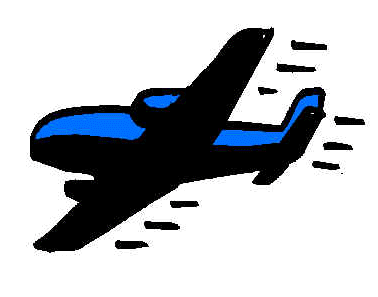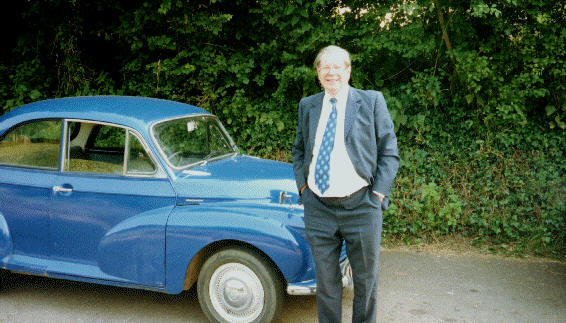

www.wolfhound.org.uk
aero and automotive engines and
engineers

John Densham died on 22nd July 1995, aged 79. A very talented engineer and enthusiast of high performance cars, including his own specials, he played a pivotal role in the successful development of the Sapphire car.
John Densham, a Riley premium apprentice, went to Lagonda in 1936 as a draughtsman on the V12 and first got to know the technical director, W. O. Bentley. He called the V12’s designers "The Big Boys", saying that as a young man in his very early twenties it was less intimidating to speak to W.O. than to them. Lagonda’s difficult financial situation lead to the departure of some Big Boys in early 1938 before full V12 development was complete. Densham, by now having nothing to draw, applied for positions where he might have at least some say in design or development.
He joined Armstrong Siddeley in 1938 working under Sid Allen on a Tiger aero-engine single cylinder rig. The Tiger then suffered from certain serious problems. Densham’s strongly held (and controversial) view was that the company’s demise in piston aero-engines was not due to the Deerhound, but the inability to develop the Tiger by 1939 into a reliable "so-called 1000hp" unit.
He was a bemused but rather observant spectator of the comings and goings starting in late 1941 [namely the ructions caused by the arrival of one Heppner, a German gas-turbine "designer", and the consequential summary firings in January 1942 of Tresilian, de Paravicini and others], adding that the decision to concentrate all future work on gas-turbines lead, in his case, to the very simple choice between working on gas-turbine combustion or being called-up. Densham saw action in North Africa.
He returned to the car side after the war to find a "simple" way of increasing the new 16hp’s performance. He concluded that a new engine was required (Sid Allen had already said as much in a slightly earlier urgent report for the Board). Densham, even in the early 1990's, referred to the 16hp’s as "The Gutless Wonders"! At about this time he built a very high performance John Densham Riley Special incorporating the flush headlights of the scrapped 1939/40 experimental luxury Armstrong Siddeley car EYO 9. He found the cut-up remnants awaiting disposal and was able to buy the headlights for 10/- (50p). Unfortunately, he knew nothing else about the car, but not for want of making enquiries. [The last time I talked to him, in the early spring of 1995, he asked whether any further information had come out and seemed a little disappointed that nothing further had, despite slides of the car being shown at various talks, etc. He also kindly made enquiries about the missing manuscripts on Engineering Design written by one of the Lagonda "Big Boys".]
Densham came to the fore in late 1946 in the testing and development of Thornett’s 6 cylinder OHV aluminium engine designed to address the 16hp's lack of performance. Densham considered it fundamentally flawed. Looking, for the first time after many years, at his surviving reports some 48 years later, he was taken aback that he had tried so hard with the unit - and that he had kept copies of the reports. He and others had pressed for the return of the departed Fred Allard (much more of an engine man than Thornett), or that an established piston engine man be retained.
Both were to happen, with the hiring of Bentley’s small team and Allard’s return. Until a new engine was ready, Densham, inter alia, experimented with fuel injection on the 16hp. A camshaft he designed for the 18hp stop-gap exhibited a marked improvement at high engine speeds, but was rejected (as he unhappily recalled years later) as output decreased at sedate engine speeds.
His pleasure of working (in a rather more senior capacity) with W. O. was tempered when it became apparent that Donald Bastow was in fact making much of the running. He considered Bastow less able than Allard. Allard was later to make important improvements to Bastow’s front suspension and chassis when adapting them for the Sapphire. Densham said that if Allard had a problem, he was refreshingly willing to ask other experts in their given fields. After Densham left the company, Allard sought his advice rather more than once. Densham, however, was impressed that the Bastow/Bentley engine developed very nearly its design output on its first test, but was aware that it would not have been economic for Armstrong Siddeley to develop and build as a production job. Years later, when Donald Bastow started to research for his book, "W.O. Bentley ~ Engineer" (Haynes 1978), one of the few names he recalled in a letter dated 10th December 1973 to Mervyn Cutler was that of John Densham.
Both a new low-cost but quality car and engine were now urgently required if car production were to continue. Design would be in-house incorporating any economical parts of the Bastow/Bentley design. Densham, by now the car division’s Experimental Engineer, later proposed that the car be named after the company’s successful turbojet, the Sapphire. [This was later confirmed to me by the late Mervyn Cutler - "they jumped at his suggestion!"]
Initially, there was in-fighting between Thornett and Allard about the car’s final specification. The delay in settling this became quite serious. Rightly or wrongly, the unwell Col. Siddeley was blamed in part. Mervyn Cutler [1902-1998] was brought back as overall car technical manager, reporting directly to Chapman. Cutler, aware of Densham’s talents, made him his right hand man and came increasingly to rely on his judgement. Chapman ordered, in writing, that copies of Densham’s reports be placed directly [sic] on his desk as soon as they were ready. The technical success of the Sapphire was in no small amount due to Densham’s development and eclectic testing. Densham was shown on the car division’s December 1952 family tree at the same level as the rather older Thornett and just below Allard, the car division's chief engineer who, in turn, reported to Cutler.
Densham, not surprisingly, had done much work on a twin carburettor version of the engine before the launch and was very disappointed that this was not made available from the outset. However, he was very proud of what was achieved given the very tight financial and time limits placed at the end of 1949. He considered the great threat to sales was going to be the relatively inexpensive Jaguar with its fine DOHC engine - a view also held by Chapman. This was at a time when many in the industry as a whole thought that the Jaguar (the "Wardour Street Bentley" amongst other names) was too much of an uninvited upstart to make much of an impression on the business of gentlemen’s carriages. As Densham was fond of noting, such pre-war attitudes were already dangerous by the early 1950’s but continued well into the 1960's. After the Sapphire’s launch, he pressed hard to develop an in-house [i.e. Densham] conceived 120+mph sports car design, but no money was available. "I wanted to make a better XK120!" Apart from initial discussion papers, no further work was done on his outline design.
John Densham decided to leave in about 1955 after fundamentally disagreeing on the company's future car policy. Mervyn Cutler had already gone to Automotive Products/Lockheed. Many years later Densham said a mistake was not giving overall day-to-day technical control of the car side at that time to the late W. H. "Pat" Lindsey whom he greatly admired, though he added that he did not know whether Lindsey would have had the time. Despite Densham having left the company three years earlier, he was fully aware of Lindsey's later involvement in important last minute improvements to the Star Sapphire's engine. In fact, Densham acted as an unpaid consultant for ASM for a little while after he left - Fred Allard, the car division's chief engineer, used to call at weekends for tea if there were a problem. "Fred was such a nice and able man that I was only too happy give whatever help I could" he generously recalled years later. The fact that Densham knew that Allard sought the advice of the very best men in the industry no doubt increased his willingness to assist.
John Densham joined the David Brown organisation in about 1955, working on gearboxes, and finally joined Automotive Products/Lockheed also on gearboxes. He was hired by Mervyn Cutler who was later to become the Technical Director of AP/Lockheed. Cutler remained Technical Director beyond normal retirement age, thereby, albeit indirectly, slowing down Densham's progress within the company. John Densham retired in the mid-1970’s, but always maintained a close interest in motor sport and matters Riley. His non-technical interests included the National Trust and a great love of the North Somerset and North Devon area and its historic buildings. At the time of his death, he lived a few miles away from Minehead in an ancient cottage with a well tendered orchard.
He is survived by two sons, both of whom share his enthusiasm for cars and steam trains.
John Densham was happy to give his recollections and sometimes robust, but always considered, thoughts on projects and people. He recalled details about the 1941 Wolfhound aero-engine design ("You mean the 24 cylinder engine") despite having never worked on the project. It was a pleasure on each occasion to make the long trip from London to meet him. It may be a fitting end in the context of "The Sphinx" to repeat Mervyn Cutler’s remark to me a few weeks after John Densham’s death that: "We all really owe John Densham a great deal for the success of the Sapphire".
© Richard Hodgson 1993 (photograph), 1995, 2000 - may not be reproduced without permission